Contents tagged with HMT_JUSTICIA
-
Inspirations - Japanese online ship-game development with Hungarian consultancy
The "Reader Meets Writer" occasions always offer the Readers the opportunity to evaluate (or re-evaluate if necessary) their subjective relationship to the written text (the experiences lived while and the lessons learned from the reading) in the light of the questions asked to the Writers and the answers received from them, or gain new inspiration from them to think everything further. A simple analogy: if someone looks back now and recalls the reading experiences of the childhood, there is a good chance that among them there will be some that later turned out to have had a lasting impact on the personal life - for example, when choosing hobby, profession, or vocation, etc. The president of our association is now reporting on such a case, presenting the result to which one of his previous work may have contributed, providing inspiration to the young mind, which is looking for the exciting and which is receptive to the new. Hereafter, dr. Tamás Balogh's reminiscence with a personal tone and a description of the work of the Japanese Yumi Watanabe follow.
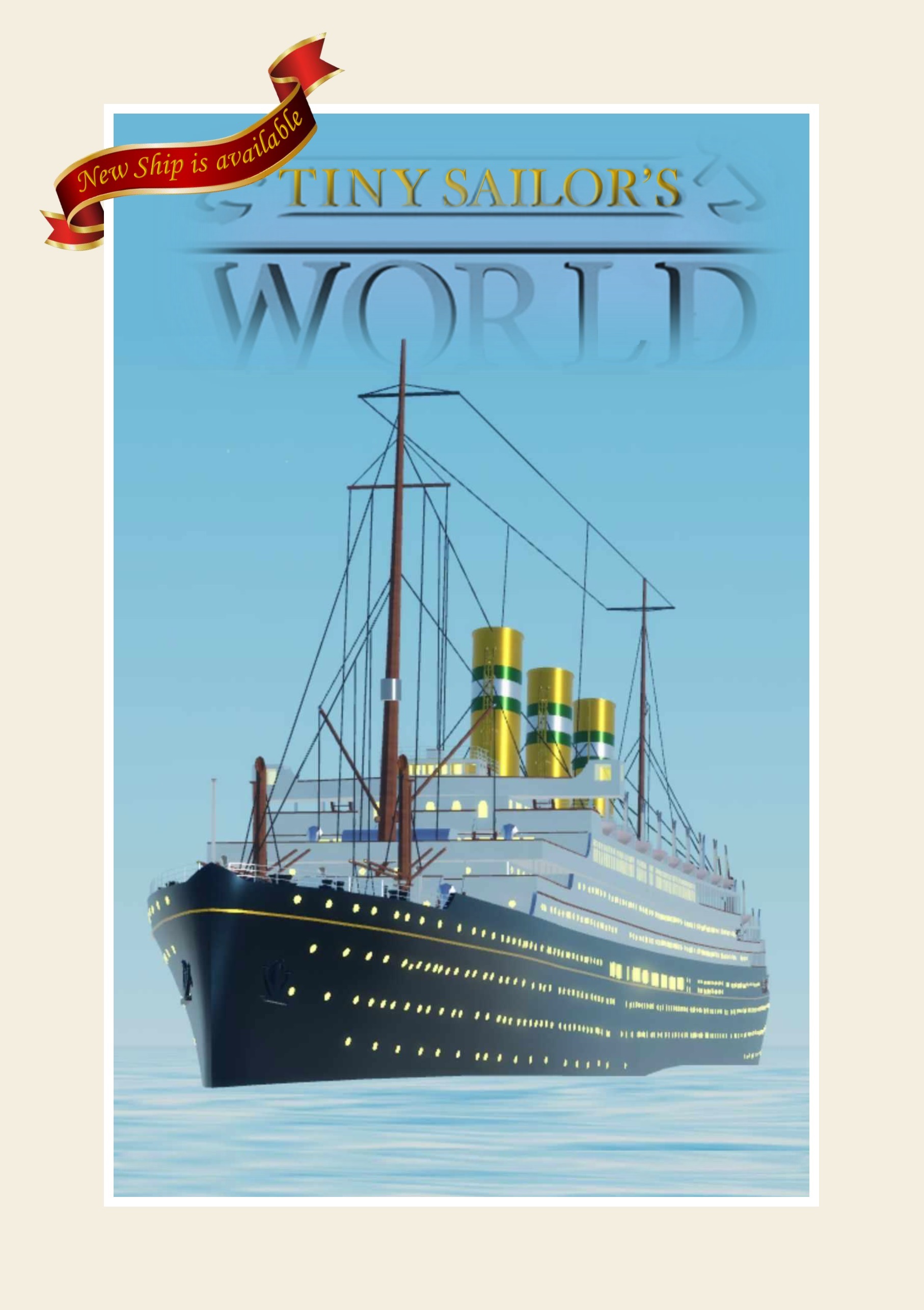
Fig. 1.: A rendering of the 3D model of the STATENDAM (II) ocean liner featured in the Tiny Sailor's World video game devloped by user GalaxyExpress with the contribution of Yumi Watanabe.
Great Book of Ships by Imre Marjai, the Hungarian maritime historian is a vivid memory for me, as I was so interested in its content that I eventually learned to read from this book, and I currently lead the association which Imre Marjai also helped to establish thirthy years earlier. Remembering this, I was very touched when a young shiplover from Japan sent me a letter and thought a story further that I had the good fortune to cover in writing before.
When my book dedicated to the history of the ocean liner STATENDAM (II) was published in 2018, based on the feedback from those who were interested, it quickly became clear that I was able to work on a topic - was relatively unprocessed till then - that aroused very keen interest among a wide range of fans of history of the ocean liners. In addition to the honorable letters from readers, several valuable professional feedbacks were received, which drew attention not only to the virtues of the work done, but also to the possibilities for further improvement. Among these, one of the most pleasant surprises for me was caused by a Japanese reader.
I received a letter from Japan on 29.05.2021. A certain Yumi Watanabe - based on the profile picture on his Facebook profile, a very young shiplover - inquired about my book published in 2018, presenting the history of the ocean liner JUSTICIA (ex-STATENDAM II.). My correspondence partner contacted me again after more than a year - on 28.08.2022 - when he was inquiring if I had ever seen any original motion picture footage of the ship during my research for the book. On 03.29.2023, he published his own research results, first in a public Facebook group dedicated to the ship's history, which has been operating since February 2014, and on 04.03, now in an expanded form on his own website. He contacted me again on 26.04.2023 regarding the details of the ship's dazzle-paint war camouflage and the ship's nomination, and these details interested him to such a depth that it became clear to me that his curiosity about the ship far exceeds that of the average person. Two days later, it became clear why: the young man reported that he was planning to make a non-commercial documentary about the ship, and asked me to appear as an interviewee in it. Unfortunately, by the middle of May, it became clear that the show was not feasible within the available time and financial frameworks. In his next letter, dated 29.12.2023, Mr. Watanabe nevertheless inquired about the design of the ship, which suggested that perhaps a more generous undertaking was taking shape. In the first quarter of 2024, more and more questions regarding further details of the ship followed, and on 24.03.2024, Watanabe Yumi proudly announced that "I am working with a small game developer and they want to add Statendam into their game as a playable ship".
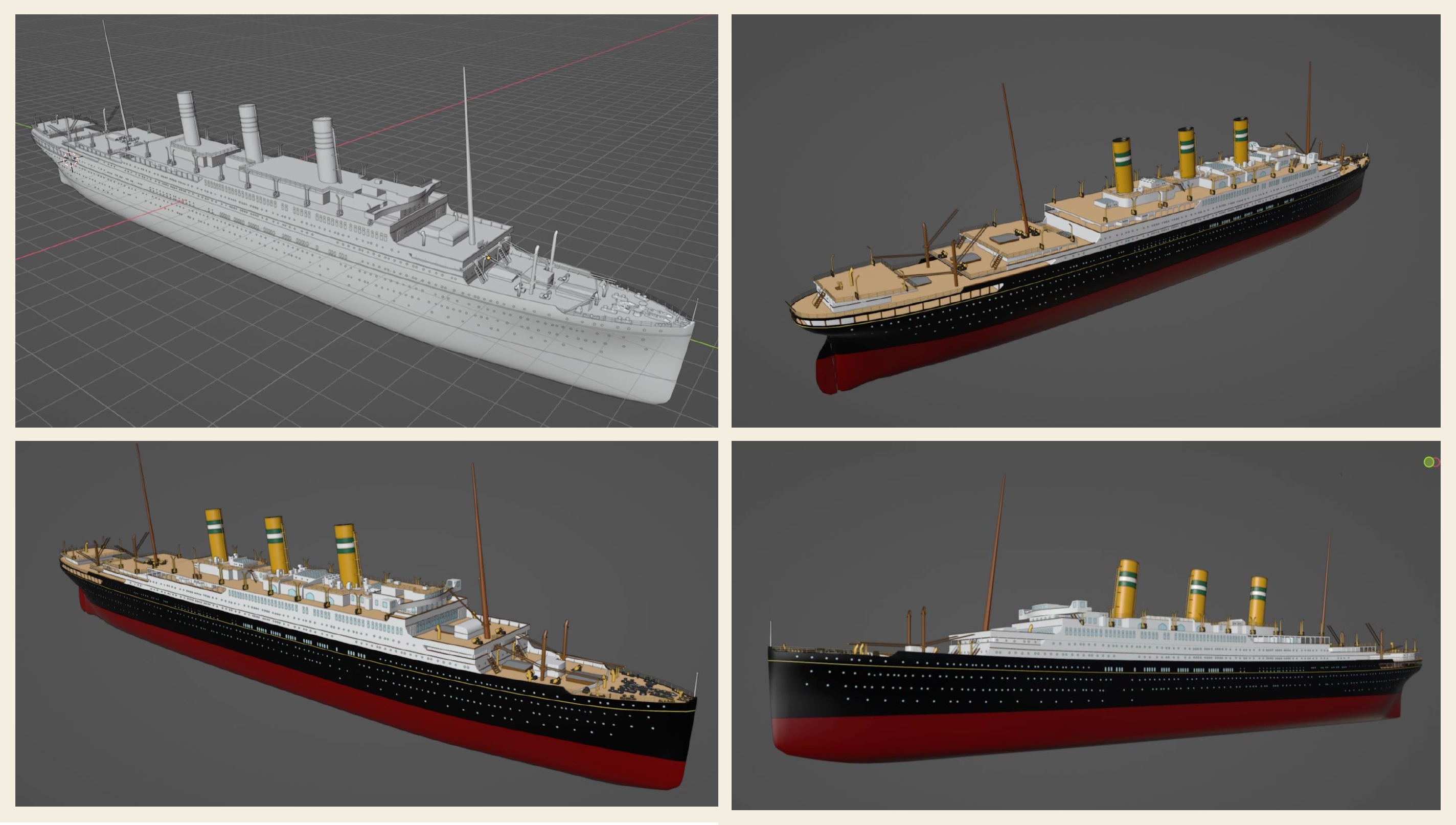
Fig. 2.: Different views of the completed - still unsurfaced - model (top left) and the colored object (bottom left and right). Courtesy of Yumi Watanabe.
The game is the Tiny Sailor's World (TSW), a Roblox game where each player can control their favorite ships modeled after real ships in a virtual world. (Roblox is an online game platform and game creation system developed by Roblox Corporation, which allows users to program games and play games created by other users. In this sense, TSW is a so-called: sandbox-game, i.e. a video game with game elements in which a predetermined goal must not be achieved, but instead provides a high degree of creativity to the players, who can freely explore the possibilities in front of them, interact with each other, and modify the game's environment or goals). In the case of STATENDAM (II), "majority of the modeling was done by the teach of Tiny Sailors World" (the user behind the user name "Galaxy Express"). Yumi Watanabe "was there to help translate the plans and create reference modelswhere needed".
At the beginning of April 2024, the 3D ship-model developed for TSW was already completed up to the level of the promenade deck, and on that only the details of the general layout had to be refined, such as the door-and-window system on the inner walls of the promenades, the exact outline and height of the boat deck superstructures, or the number, size and type of deck ventilators, as well as the number and position of the bollards, bitts and fairleads. On April 14, 2024, the work was still in full swing when the following letter arrived: "Thank you Dr Balogh! I am grateful that you have taken all this time to answer my questions regarding Statendam, I know you are a busy person but doing this has made me the person I am today. I am attending a naval engineering course because of you sir, so I couldn't thank you enough. The dusk is almost upon me so i need to get some sleep but thank you again for inspiring me. With best regards. Watanabe”.
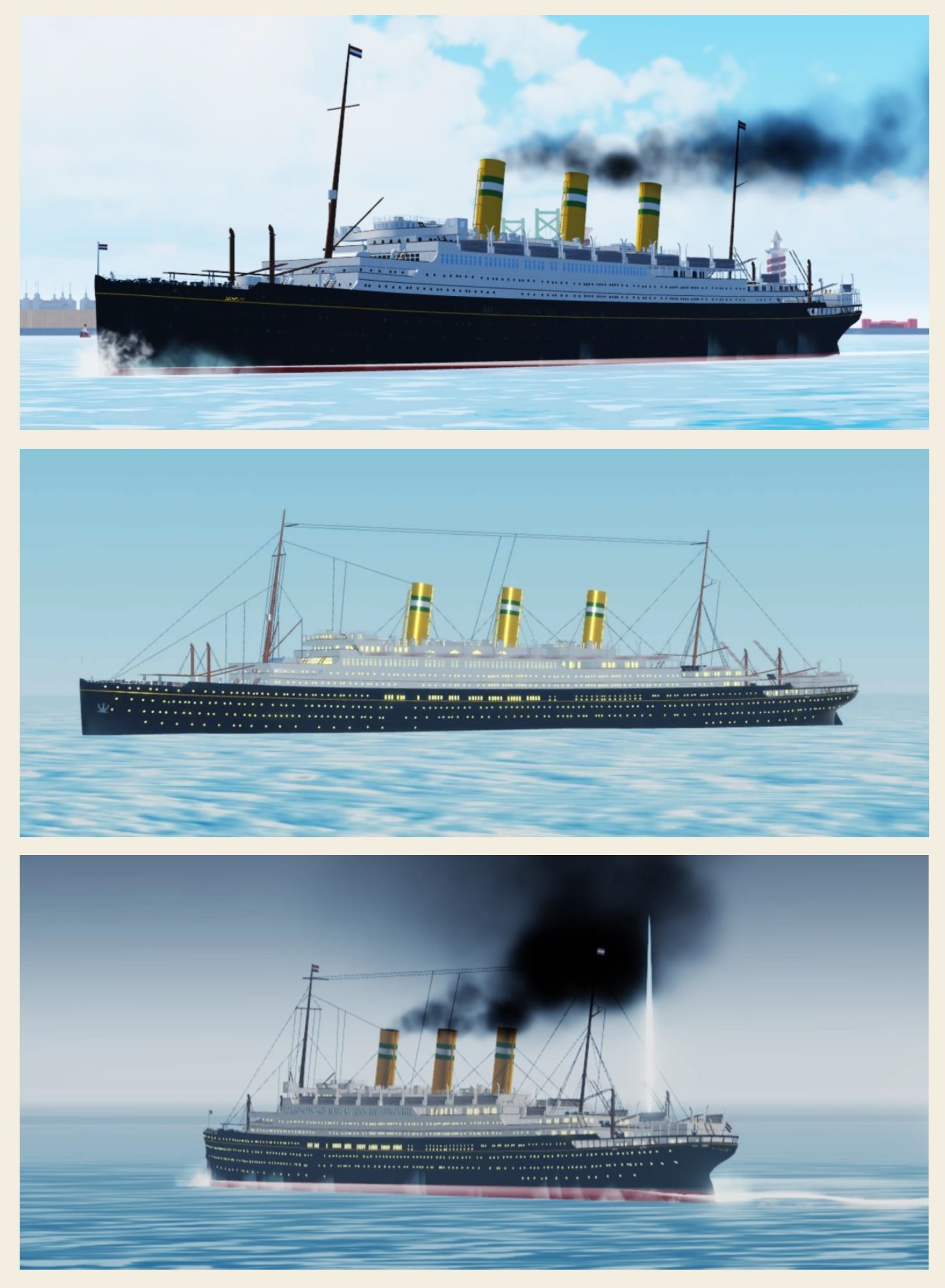
Fig. 3.: The rendered object from different angles. Courtesy of Yumi Watanabe.It is an exceptional opportunity for a writer to be experienced with the impact of his work on others (i.e. the experience attributed by Readers to reading his writings). According to Yumi Watanabe, he chose the naval engineering profession because he was inspired by the story of STATENDAM (the story that he found out about on the Internet when my book was published and when he learned about it such a way that he does not have the book to this day, thus - mainly through his own efforts - he acquired detailed knowledge of the ship, supplemented occasionally by our correspondence). At that moment - after reading the letter - I was found myself in the position of the Reader (suddenly I had the task of thinking about my personal relationship with the text).
All I could think about was how small the world had become. When writing my book on the history of the austro-hungarian cruiser KAISERIN ELISABETH, I had the pleasure of personally researching in Japan, where the surviving members of the crew of the cruiser sunk in the First World War spent their time as prisoners of war. It was then that I met Mr. Atsushi Otsuru, professor of history at Kobe University, whose openness and willingness to help made a deep impression on me and basically contributed to the fact that I was able to visit the area of the former Ono POW camp and its existing buildings. Fourteen years after the research at that time, Yumi Watanabe's letter serve as a remindeder that it is not at all unimaginable for the citizens of countries such as Japan and Hungary, located at a significant geographical distance from each other, to be inspired by their mutual enthusiasm.
The 3D model of STATENDAM was completed by April 24, 2024, and published in the game on May 18, accessible to connected users.
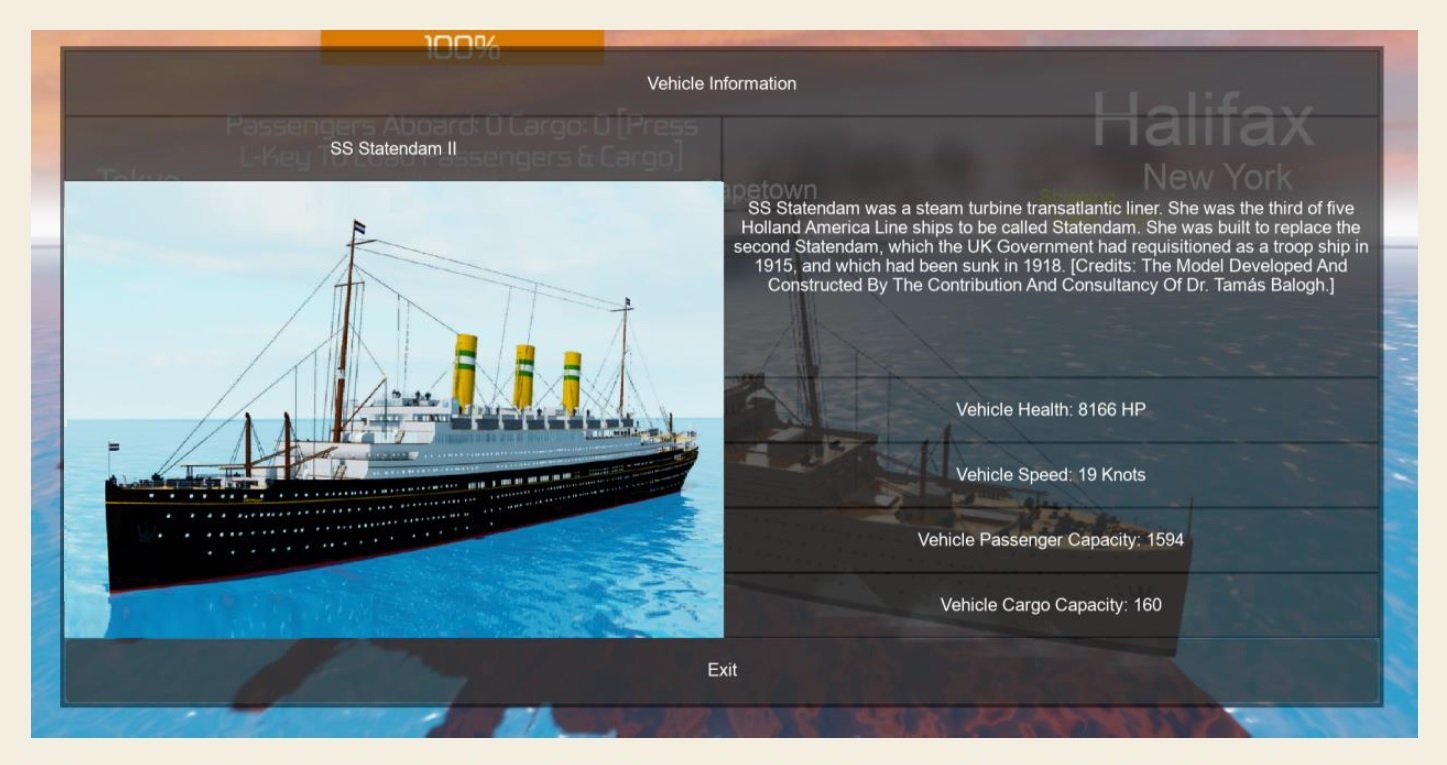
Fig. 4.: Data sheet of the new model available in the game. Corutesy of Yumi Watanabe.The successful design of the well-done creation that players can enjoy is not only due to the accuracy of the external representation, but also the fact that – like in case of all the other ocean liners in the game – at least three of its interior spaces had to be made accessible, that is, they had to be developed in detail. There are currently 71 historic and immaginary ships and 15 airplanes available in the game (26 of the ships are free). There can be no doubt that the story of STATENDAM (II) will become known to an even wider circle through the game, and this is primarily the merit of Watanabe Yumi, who created a 3D model of the ship in an exciting form, whic is accurate and well-detailed, therefore pleasing to the eye. The manner and the determined, competent enthusiasm with which he did this, together with the result of the work, confirmed everything that I wrote to him in my previous letter on May 17, 2023 (when it became clear that the filming of the documentary could not take place): "Dear Mr. Watanabe, Thank you for the kind information! I am sorry to read that the current constraints prevent you from making the planned documentary at this moment, however, I believe that the kind of enthusiasm that I experienced on your part, despite your young age, will definitely find the right time and way for to gain expression sooner or later. It was a particularly great experience for me to see that the interest in the history of STATENDAM/JUSTICIA was awakened in Japan, of which you also enhanced by your work, so it was quite natural for me to make available (within the limits of possibilities) to you all those information of which you needed to fulfill your interest. If you are still interested in the topic in the future, you will find me. All the best, Tamas Balogh".
Seeing the 3D model made by the contribution of Yumi Watanabe, I think that he gained the right way for expression and by viewing the pictures of the finished model (which, by the courtesy of him, I can share with our readers outside the game), everyone can decide for themselves whether it really happened that way.
Congratulate to Yumi Watanabe and wish him success and good health in his further work!
-
Old paper has been renewed with an unparalleled effort - one of the most famous pieces of the ocean liner's history is in good condition again
News has arrived from the Low Countries. With the financial contribution of collector Peter Meersman, the longitudinal section of the famous ocean liner STATENDAM (II) - later JUSITCIA - made in 1913, of which only nine known copies have survived in the whole world has been restored.
In 2018, the president of our association, Dr. Tamás Balogh, published his book about the history of the ocean liner launched under the name STATENDAM and sunk as a British war transport JUSTICIA during the First World War. This was the very first monographic presentation of the ship's history and the book-launch was held exactly on the centenary of the ship's sinking in the former Harland & Wolff Shipyard, in Belfast, where the ship was born.
Many pictures for the book were provided by the distinguished Belgian collector Peter Meersmann, who soon after the manuscript was completed and published, acquired a contemporary, huge color longitudinal section of the ship, which needed extensive restoration due to its severe damage. Already during the preparation of the book, Peter demonstrated his exceptional enthusiasm for ocean liners and his commitment as a collector, when he helped the publication of the book by making available his great collection. However, by acquiring the longitudinal section and providing the costs of the restoration, if this is at all possible, he accomplished an even greater thing, since among the copies of this longitudinal section (created for the Holland-America Line by L. Ph. Baijens around 1913 as part of the original Dutch-commissioned promotional material of STATENDAM) as far as we know, only 8 copies have survived all around the world. One of them is kept by the Rotterdam City Archives. Thus, this graphic representation is, in a sense, the true "white unicorn" for ocean liner enthusiasts.
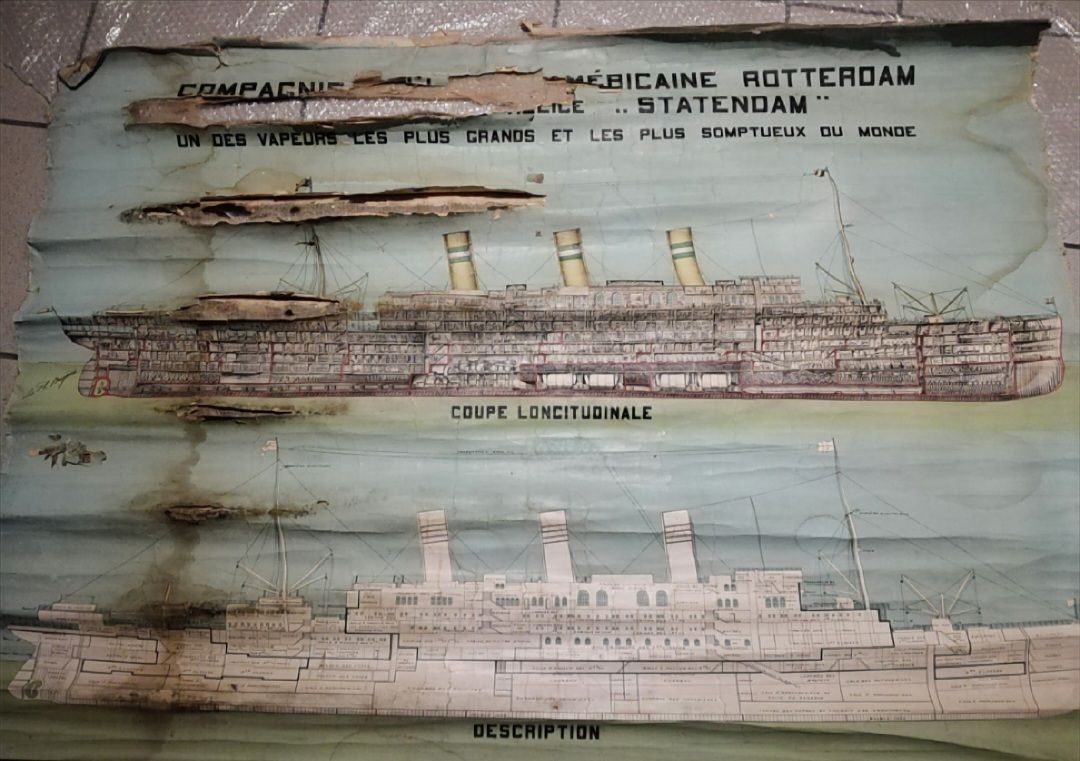
Fig. 1: The artwork at the time of acquisition (photo: Peter Meersman).
The longitudinal section, acquired in 2019, was returned to its original state in March 2024, after years of work in the hands of competent restorer, who succeeded in restoring and conserving the large-scale print with incredibly meticulous work. The drawing first had to be stabilized due to the lack of material that had developed over the hundred years since its completion, so it was reinforced with thin Japanese paper (Japanese paper is a fundamental material for paper-restoration, because it is made up of long fibers, and these long fiber-ends can be added more easily to the original paper surface). After replacing missing parts of the paper-material, damaged lines and figures had to be redrawn in some places with characters and coloring corresponding to the original.
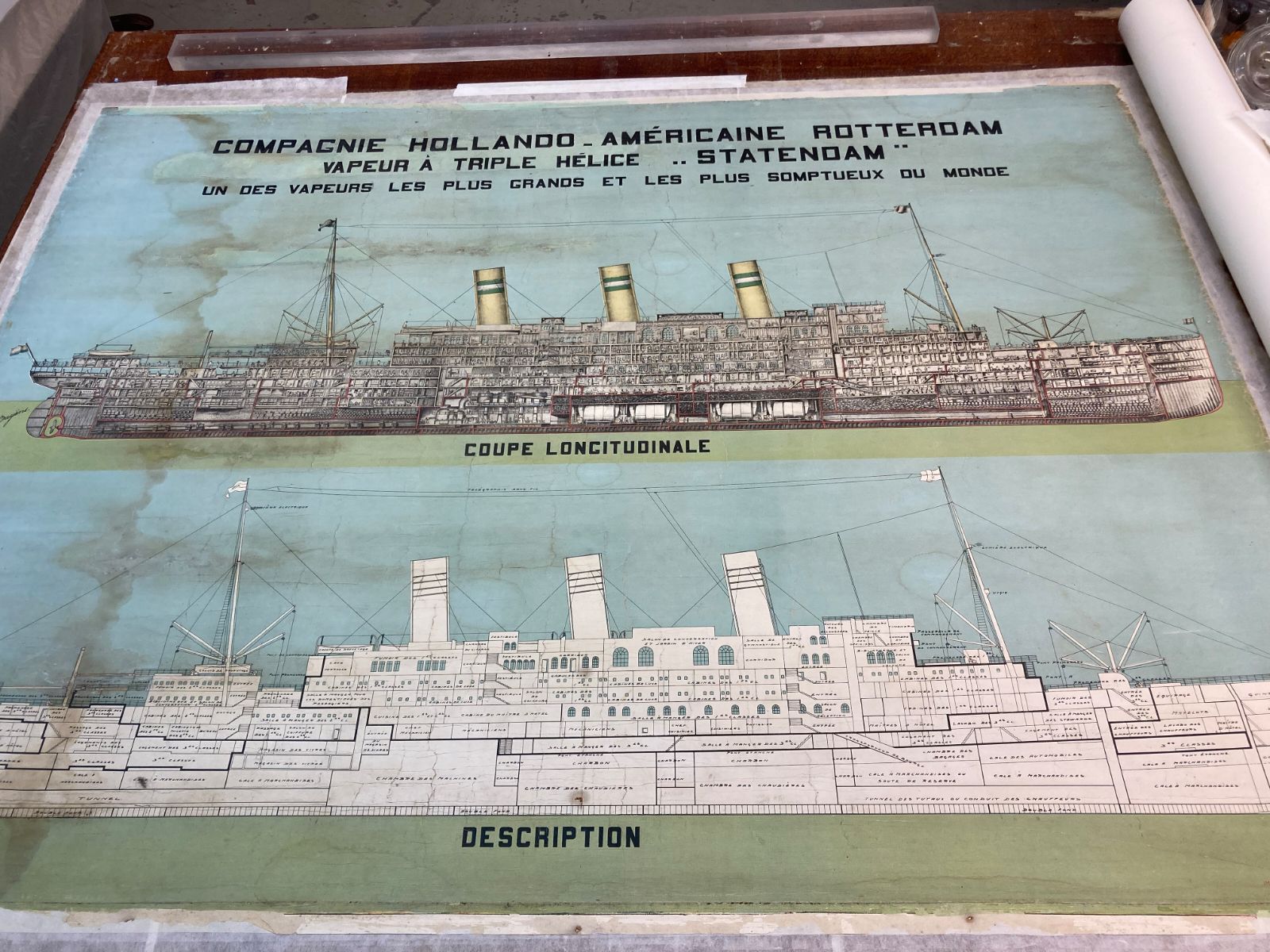
Fig. 2.: The artwork after restoration (photo by Peter Meersman).
The completed work recalls the former process of shipbuilding and promotion practices in an interesting way, and is also an incomparably interesting document of the long last era. As Peter Meersman expressed: “I'm pleased you like the result of the restoration. It's a huge difference compared to 4 years ago. I'm glad it's been saved, knowing there are only eight still known to exist it was of great importance to have this very rare cutaway resucued. It truly is the jewel in the crown of my collection.”
We heartily congratulate for the successful restoration work realized in cooperation between the collector and the restorer!
-
Detailed overview made for the first time, mapping the wreckage of the HMHT JUSTICIA, sunk in 1918
On March 1, 2020, second episode of the "Shipwreck Secrets", of the Discovery Science TV-channel in the United States, was broadcast (will be on screen also in the rest of the world in the coming months). This second episode of the six-part series, introduces the history of the sinking of his majesty's hired trannsport vessel HMHT JUSTICIA (converted from the dutch ocean liner STATENDAM) and an on-site analysis of the wreckage off the Atlantic coast of Donegal, Ireland.
The president of our association, Dr. Tamás Balogh, who launched his book on the history of the ship at the Harland & Wolff Shipyard in Belfast in 2018, and as a result, he was invited to participate in the contribution to the production of the film. The exciting expedition and filmmaking took place in May 2019, followed by the post-production was resulted a one-hour film, which was presented to those interested on March 1, 2020.
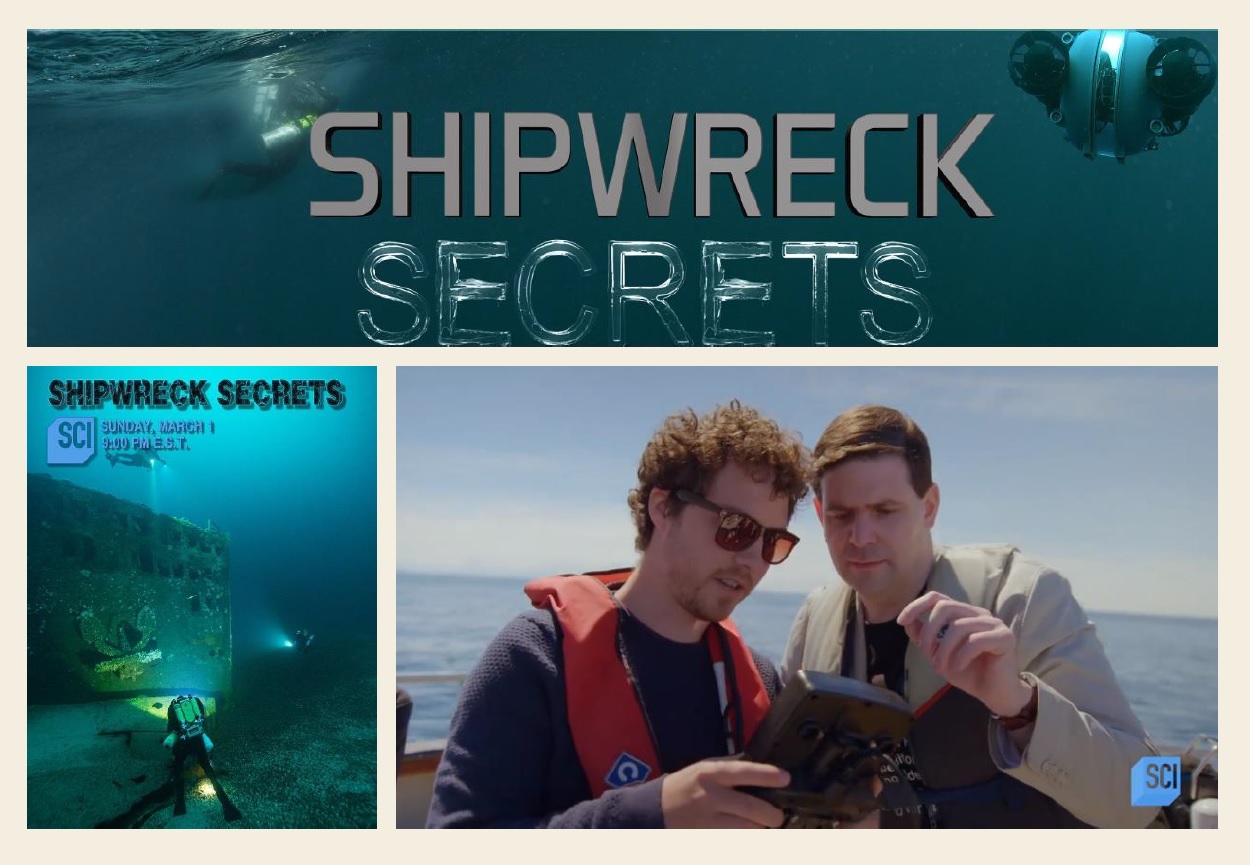
Figure 1: Logo of the TV-series, poster of the second episode, and a scene (source: Shipwreck Secrets).
The most important result of the work is that 100 years after the ship sank, the first complete and comprehensive survey of the wrecksite was completed. The exact resting place of the wreck has been identified by the divers Norman and Simon Bamford, and Leight Bishop, a well-known underwater photographer, has regularly captured great underwater photographs from the mid-1990s, which have made the ship widely known since 1998. Some details, such as the bow, were captured on iconic images and inspired dozens of divers, but little was known about the ship as a whole.
At least a comprehensive picture of the wrecksite as a whole was obtained when the first SONAR image of the wrecksite was taken in 2005 as part of the Irish National Seabed Survey. This image showed mainly the spatial location of the wreckage and the depth data, showing the lowest and highest elevations of the wreck with a color scale. Although all details are missing from this picture, some basic facts (as compared to previous close-ups made by the scuba divers) have become clear. It turned out, for example, that the ship, which is in the way of strong sea currents, had collapsed and that the once 237 m long, 26 m wide hull was scattered over a wrecksite of about 300 m long and a good 50 m wide. The currents, for example, swept the superstructure to the left side of the ship, and today only parts of the hull below the former waterline remained more or less intact. Everything else was broken into small pieces, turning the magnificent ocean liner into a jigsaw puzzle.
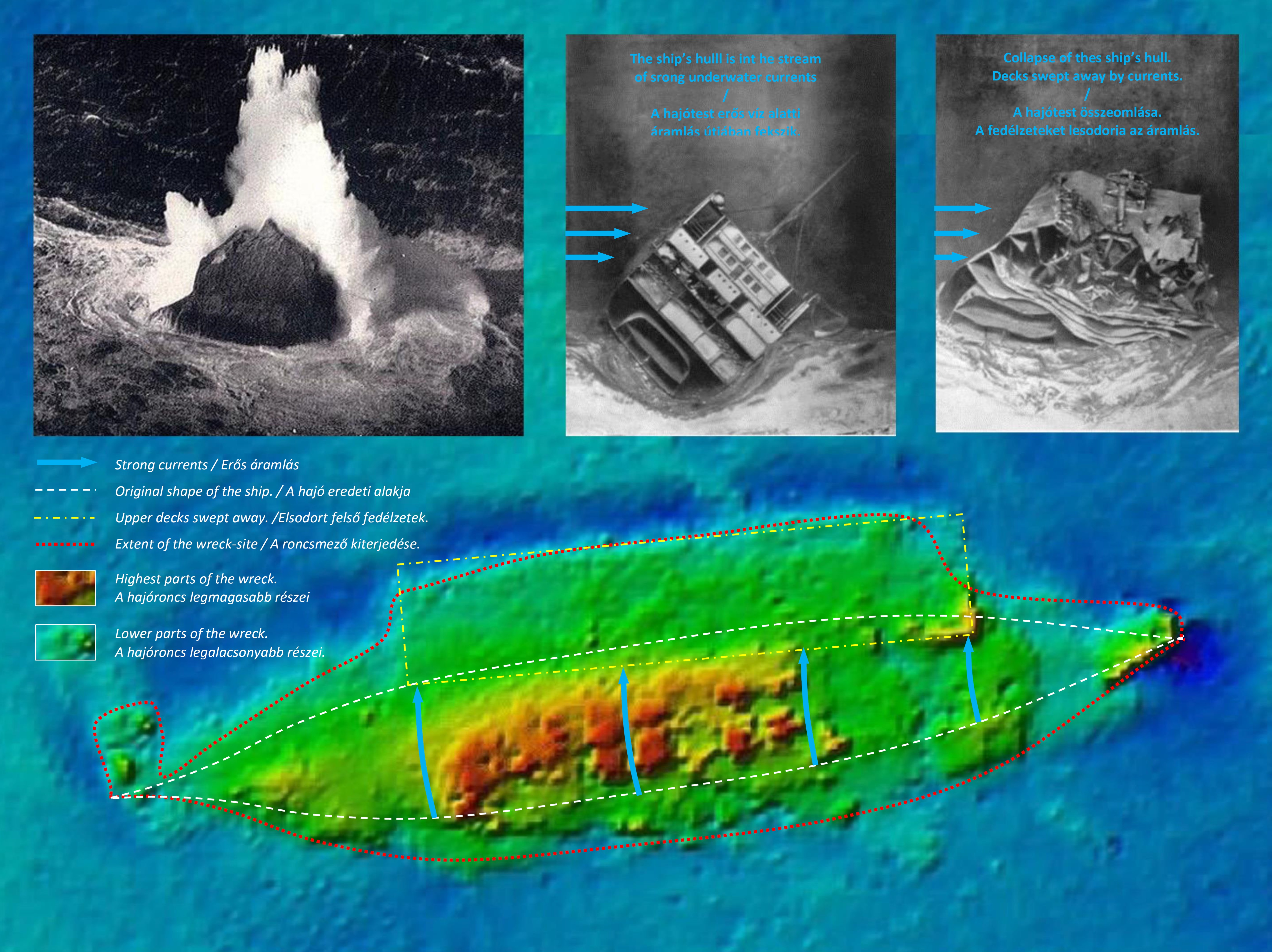
Figure 2: The SONAR image of the wreck and the main features it identifies, showing the environmental conditions leading to the collapse and the process of it (source: Dr. Tamás Balogh, using the Sonar image of INFOMAR).
Norman Woods attempted to assemble the parts of this jigsaw puzzles for the first time in 2014, capturing the underwater footage of larger areas of the wreckage by attaching his GoPro camera to his scooter, so he was able to swim along the full length of the ship from bow to stern and back again only in 13 minutes. However, he was not able to go to the sides, far away from the ship's former centerline, leaving many uncharted areas in the wreckage and waiting to be identified.
These information helped to determine the starting points of current research and to design and conduct a new survey. As a result, Dr. Tamás Balogh prepared the first complete representation of HMT JUSTICIA's resting place, which can be seen here for the first time.
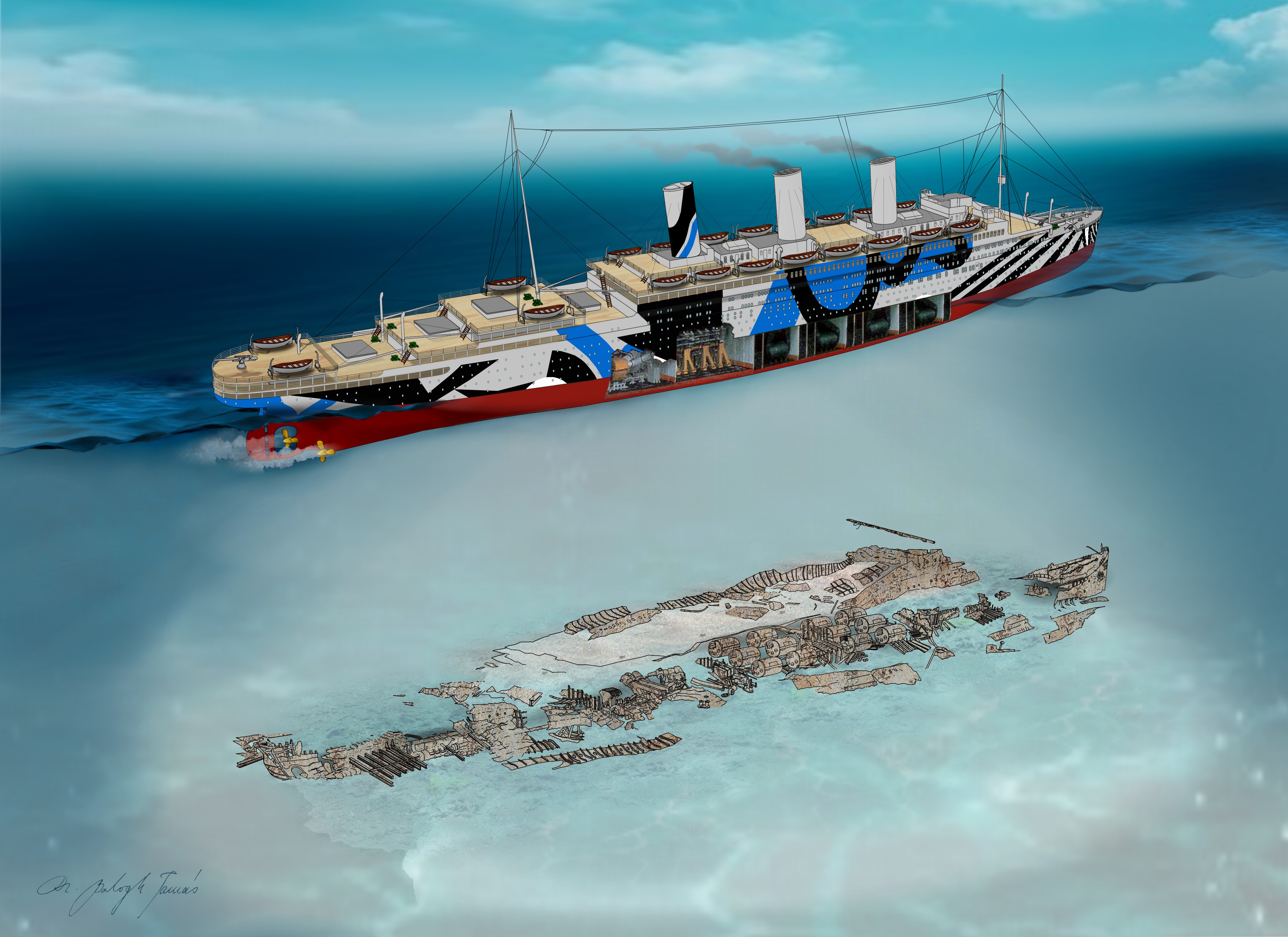
Figure 3: 1918-2018 - HMHT JUSTICIA and its Wreckage (created by Dr. Tamás Balogh, © 2020).

Figure 4: Outline drawing of the wreckage field, identifying the exact origin of the components there (by Dr. Tamás Balogh, © 2020).
By the end of the research, we were able to identify that which was the former (original) position on the ship of some larger structural units laying on the wrecksite, which also helps to better understand and reconstruct the deformation and disintegration process of the shipwreck. It was a great surprise that the walls of the watertight compartments in the lower part of the hull, can still be seen around the engines and the boiler rooms, everywhere on the ship. These walls specially strengthened after the TITANIC disaster regarding that the JUTICIA was the first ocean liner built after the sinking of the TITANIC, where the new safety regulations could be applied. Also new was the identification of the ship's fallen foremast. Unfortunately, however, it has also been confirmed that the natural deterioration of the wreck has accelerated and that even the small details that are still recognizable will soon disappear.
But before that could happen in the future, our expedition however, was able to record the condition of the wrecks and thanks to our work, the picture we know of them in 2019 is now preserved. It was a great opportunity and I'm grateful that I was able to take part in that. Thank you all!
Credits:
Filmmakers:
- Loubna Turjuman Genovese, Producer;
- Matt Bone, Producer;
- Quincy Andrews, Drone operator;
- Jonathan Young, Cameraman;
- Liam Scott, Technical support.
Divers:
- Barry McGill, Leading Diver;
- Garet O’Neil, diver;
- Stewart Andrews diver;
- Kevin McShane, Support Diver;
- Pat Coughlan Support Diver;
- Michael McVeigh, Skipper.
More about the expedition:
https://m.blog.hu/ha/hajosnep/image/008_deadly_pair_diving_in_donegal.pdf
Further wreck-diving expeditions with Tamás Balogh:
Between 2003 and 2008 he was involved in the research of the shipwrecks of the Austro-Hungarian Monarchy on the Adriatic (the destroyer STREITER, the cruiser ZENTA and the battleship SZENT ISTVÁN).
Attila Dávid Molnár made a series of films about the research (episodes made about STREITER, ZENTA and SZENT ISTVÁN were also shown on Spektrum television).
In 2016, on the 100th anniversary of the Battle of the Jutland, he was a historian of a largescale expedition with 60 divers from 15 countries and was the author of some articles on the results of the expedition.
-
Első ízben látható az 1918-ban elsüllyedt JUSTICIA óceánjáró roncstérképe
2020. március 1-én került adásba a Discovery Science televíziós csatornán az Egyesült Államokban (a következő hónapokban pedig a világ többi részén) a „Hajóroncsok titkai” - Shipwreck Secrets - c. hatrészes sorozat második epizódja, amely a HMT JUSTICIA (ex-STATENDAM) óceánjáró csapatszállító hajó elsüllyesztésének történetét és az északi ír partok előtt, az Atlanti-óceánban nyugvó roncsainak helyszíni elemzését mutatja be.
A film elkészítésében szakértőként közreműködött egyesületünk elnöke, Dr. Balogh Tamás, aki 2018-ban – a hajó elsüllyedésének századik évfordulóján – a belfasti Harland & Wolff Hajógyárban mutatta be az érdeklődőknek a hajó történetéről szóló „Dutch Titanic” c. könyvét. Ennek köszönhetően kapott felkérést a munkában való közreműködésre. Az eseménydús expedícióra és a filmforgatásra 2019 májusában került sor, az utómunkákat követően pedig elkészült az eredményeket összegző egyórás film, amit 2020. március 1-én mutattak be az érdeklődőknek.

1. ábra: A filmsorozat logója, a második epizód plakátja és egy jelenete (forrás: Shipwreck Secrets).
A munka legfontosabb eredménye az, hogy a hajó elsüllyedése után száz esztendővel elkészült a roncsmező első teljes és átfogó felmérése. A roncs pontos nyughelyét Norman és Simon Bamford búvárok azonosították, Leight Bishop ismert búvárfotós pedig az 1990-es évek közepétől készített rendszeresen nagyszerű víz alatti fénykép-felvételeket, amelyek 1998-tól kezdve széles körben ismertté tették a hajót. Egyes részletek – mint például a hajóorr – nagy hatású, ikonikus felvételeken nyertek bemutatást és búvárok tucatjait inspirálták, de a hajó egészéről ekkor még keveset lehetett tudni.
A roncsmező egészéről legalább átfogó képet akkor sikerült kapni, amikor az Ír Országos Tengerfenék-felmérés keretében 2005-ben elkészítették a roncsok első SONAR-képét. Ez a felvétel leginkább a roncsok térbeli elhelyezkedését és a mélység-adatokat mutatta be színskálával érzékeltetve a roncs legalacsonyabban fekvő, illetve a legmagasabbra emelkedő részeit. Bár erről a képről minden részlet hiányzik, néhány alapvető fontosságú tény azonban (az egyes részleteket közelről bemutató korábbi búvárfotókkal összevetve) már világossá vált. Kiderült például, hogy az erős tengeri áramlások útjában fekvő hajó, szétesett, s az egykor 237 m hosszú, 26 m széles hajótest alkotóelemei egy nagyjából 300 m hosszú és jó 50 m széles roncsmezőn szóródtak szét. Az áramlások a felépítményt például a hajó bal oldalára sodorták, a hajótestből pedig mára lényegében csak az egykori vízvonal alatti részek maradtak többé-kevésbé egyben. Minden más apró darabokra tört, jókora kirakóssá alakítva ezzel a hajdan fenséges óceánjárót.

2. ábra: A roncs SONAR-képe és az arról felismerhető főbb jellegzetességek az összeomlásához vezető környezeti viszonyok és az összeomlás folyamatának bemutatásával (forrás: Dr. Balogh Tamás, az INFOMAR Sonar-képének felhasználásával).
A kirakós mozaikdarabkáit első ízben Norman Woods kísérelte meg összeilleszteni, akinek 2014-ben elsőként sikerült a roncsmező nagyobb területeit összefüggően bemutató víz alatti filmfelvételt készítenie úgy, hogy GoPro kameráját a búvárvontatójához rögzítette, így 13 perc alatt képes volt oda-vissza végigúszni a hatalmas hajó hossztengelye mentén. Neki sem sikerült azonban túlságosan eltávolodnia a hajó egykori középvonalától, így a roncsmezőn számos feltérképezetlen terület maradt még és vár azonosításra.
Ezek az információk segítették a mostani kutatás kiindulópontjainak meghatározását és az újabb felmérés megtervezését és elvégzését. Ennek eredményeként készíthette el Dr. Balogh Tamás a HMT JUSTICIA nyughelyének első teljes ábrázolását, amelyet itt láthatnak első ízben az érdeklődők.

3. ábra: 1918-2018 - A HMT JUSTICIA és roncsai (készítette: Dr. Balogh Tamás, © 2020).

4. ábra: A roncsmező áttekintő rajza az ott található alkatrészek pontos származási helyének azonosításával (készítette: Dr. Balogh Tamás, © 2020).
A kutatás végére sikerült azonosítani a roncson megtalálható egyes nagyobb szerkezeti egységek egykori – a hajón lévő eredeti – pozícióját, ami a hajótest összeroskadásához és széteséséhez vezető torzulási folyamat jobb megértéséhez és rekonstrukciójához is segítséget nyújt. Nagy meglepetés volt, hogy a hajótest víz alatti részében elhelyezett és a TITANIC katasztrófája után különlegesen megerősített vízmentes rekeszek (a JUTICIA a volt a TITANIC elsüllyedése után épített első óceánjáró, ahol az új biztonsági előírásokat alkalmazhatták) nyomásálló falai még ma is állnak és a kazánházak, illetve a gépházak körül most is láthatók végig, mindenütt az egész hajón. Ugyancsak újdonságot jelentett a hajó kidőlt előárbocának azonosítása. Sajnos azonban az is megerősítést nyert, hogy a roncs állapotának természetes romlása felgyorsult és a még felismerhető kevés részlet is hamarosan végképp eltűnik a szemünk elől.
Ám expedíciónk még ezelőtt rögzíthette a hajóroncsok állapotát, így a róluk 2019-ben ismert kép - az elvégzett munkának köszönhetően - most már fennmarad. Nagyszerű lehetőség volt ez. Köszönet érte mindenkinek!
Stáb:
Filmes:
- Loubna Turjuman Genovese, sorozat-szerkesztő;
- Matt Bone, producer;
- Quincy Andrews, drón-kezelő;
- Jonathan Young, operatőr;
- Liam Scott, segítő.
Búvár:
- Barry McGill, merülés-vezető főbúvár;
- Garet O’Neil, merülő búvár;
- Stewart Andrews merülő búvár;
- Kevin McShane, fedélzeti segítő búvár;
- Pat Coughlan fedélzeti segítő búvár;
- Michael McVeigh, kapitány.
További információk az expedícióról:
https://m.blog.hu/ha/hajosnep/image/006_justicia_ub124_expedicio_2019052125.pdf
További roncskutató expedíciók Balogh Tamás közreműködésével:
2003-2008 között az Osztrák-Magyar Monarchia Haditengerészetének az Adrián elsüllyedt hajóroncsai (a STREITER romboló, a ZENTA cirkáló és a SZENT ISTVÁN csatahajó) kutatásában közreműködött.
A kutatásról Molnár Attila Dávid készített filmsorozatot (a STREITER-ről, a ZENTA-ról és a SZENT ISTVÁN-ról készült filmeket egyebek között a Spektrum televízió is bemutatta).
2016-ban a jütlandi tengeri ütközet századik évfordulóján egy nagyméretű, 15 országból érkezett 60 búvár részvételével folytatott expedíció történeti szakértője és az expedíció eredményeiről szóló beszámoló készítője volt.